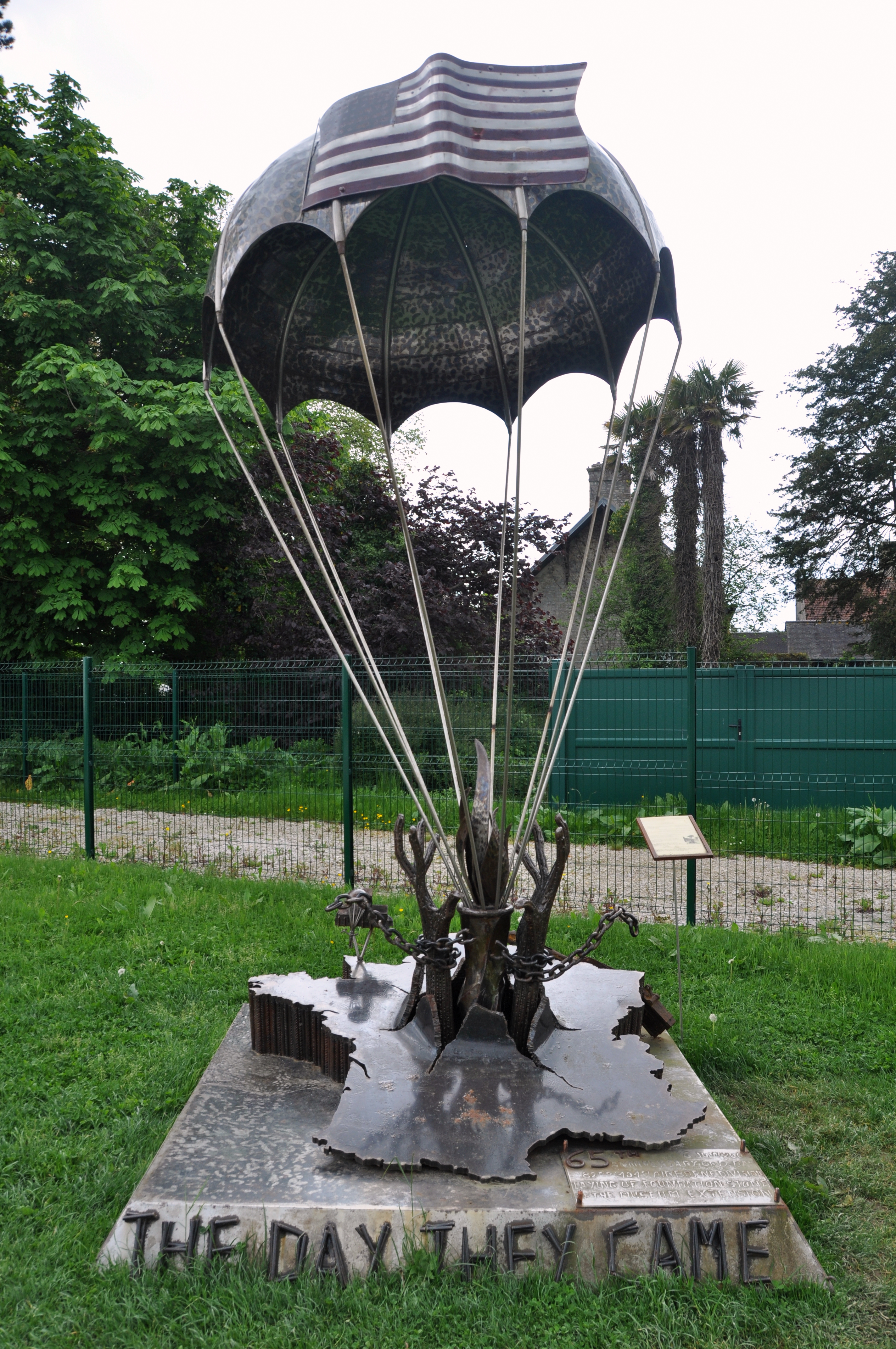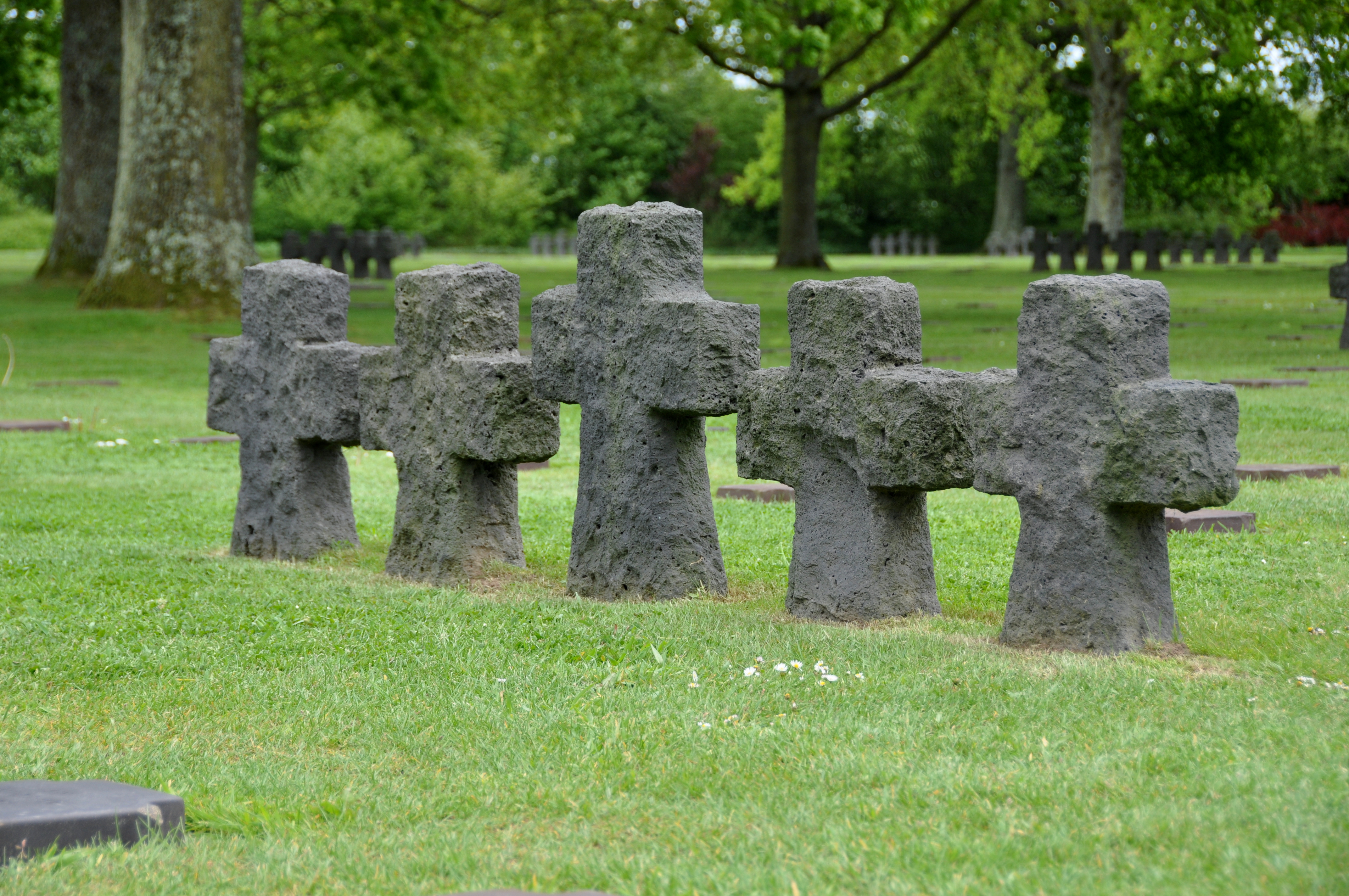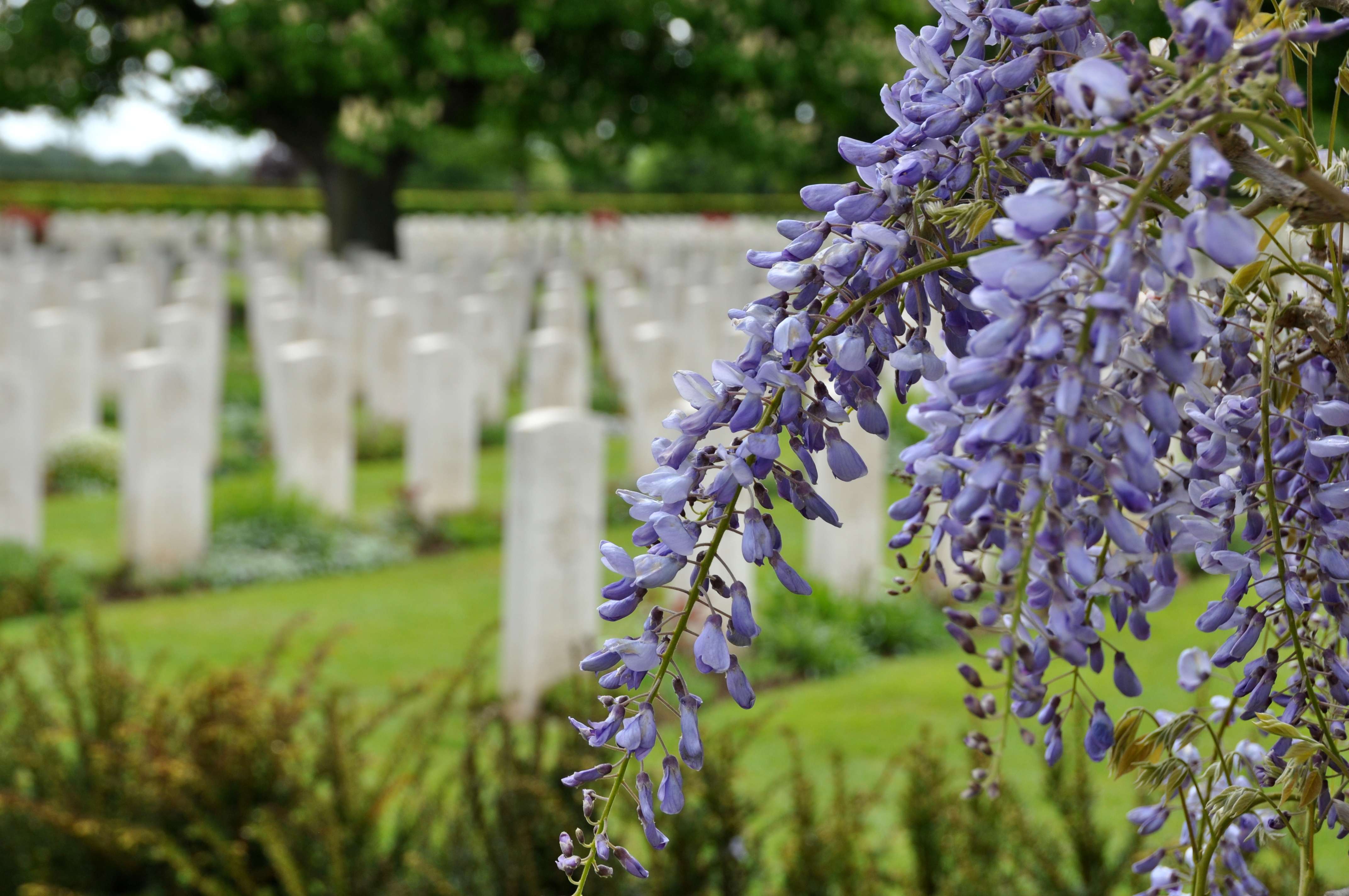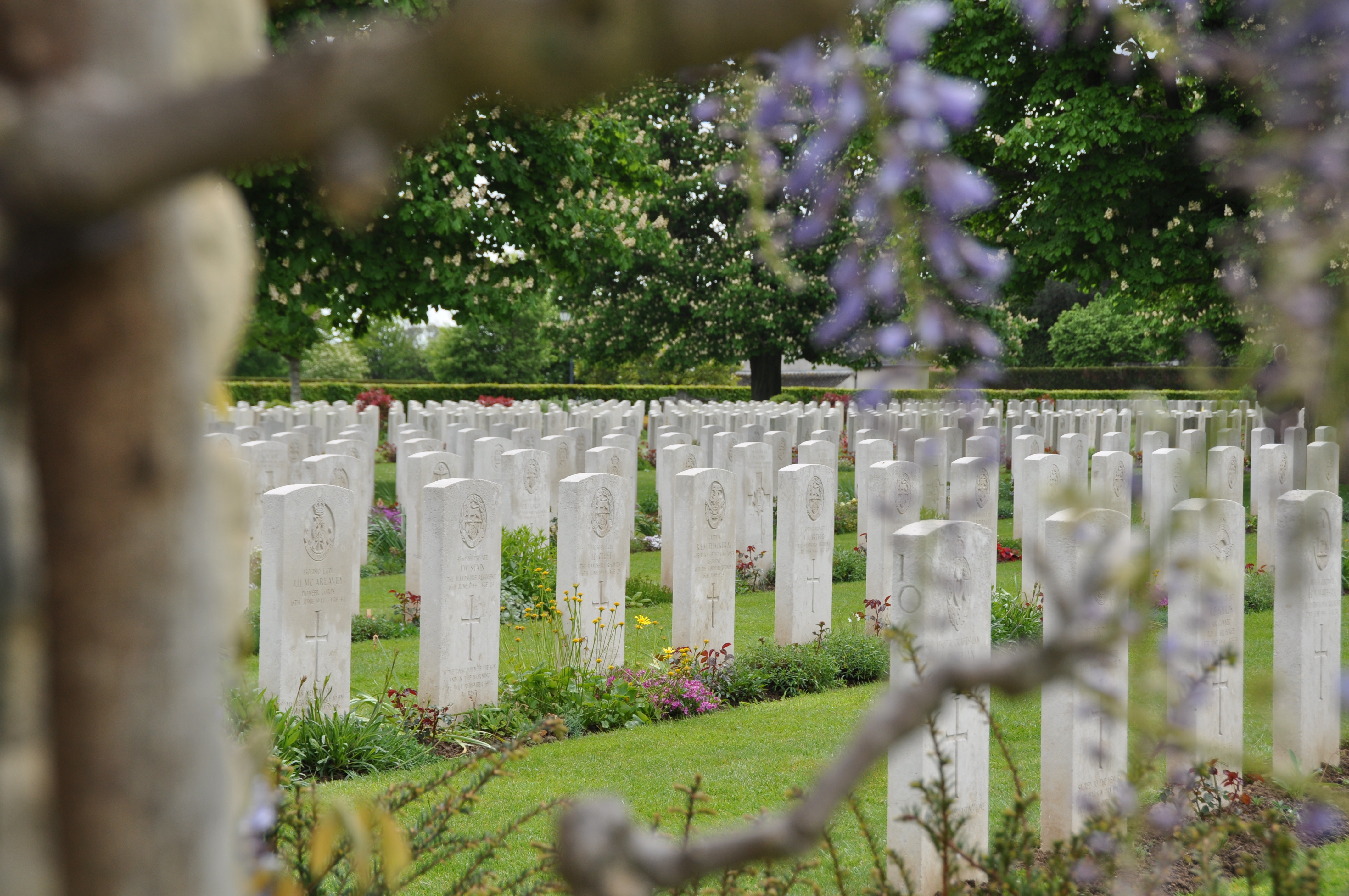A foreign grave is a painful thing where loving hands no flowers can bring. – Corporal W.E. Robinson
Over 100,000 American WWII soldiers are buried in European soil. This is not to discount the innumerable individuals from every country involved in the war who have found their final resting place in foreign lands. The marked and unmarked graves are uncountable.
Those soldiers who are still missing, or those whose remains never made it to a proper cemetery, are not forgotten in the foreign lands where they gave their lives. Nothing shows this better than the small towns within Normandy. Driving through the countryside, amidst fields and neighborhoods spread across the region, there is a myriad of memorials to the heroic deeds of American and Allied soldiers. Some are large and bold, some are hidden and understated. All of them commemorate sacrifices made during ‘the longest day’ in our world’s history.
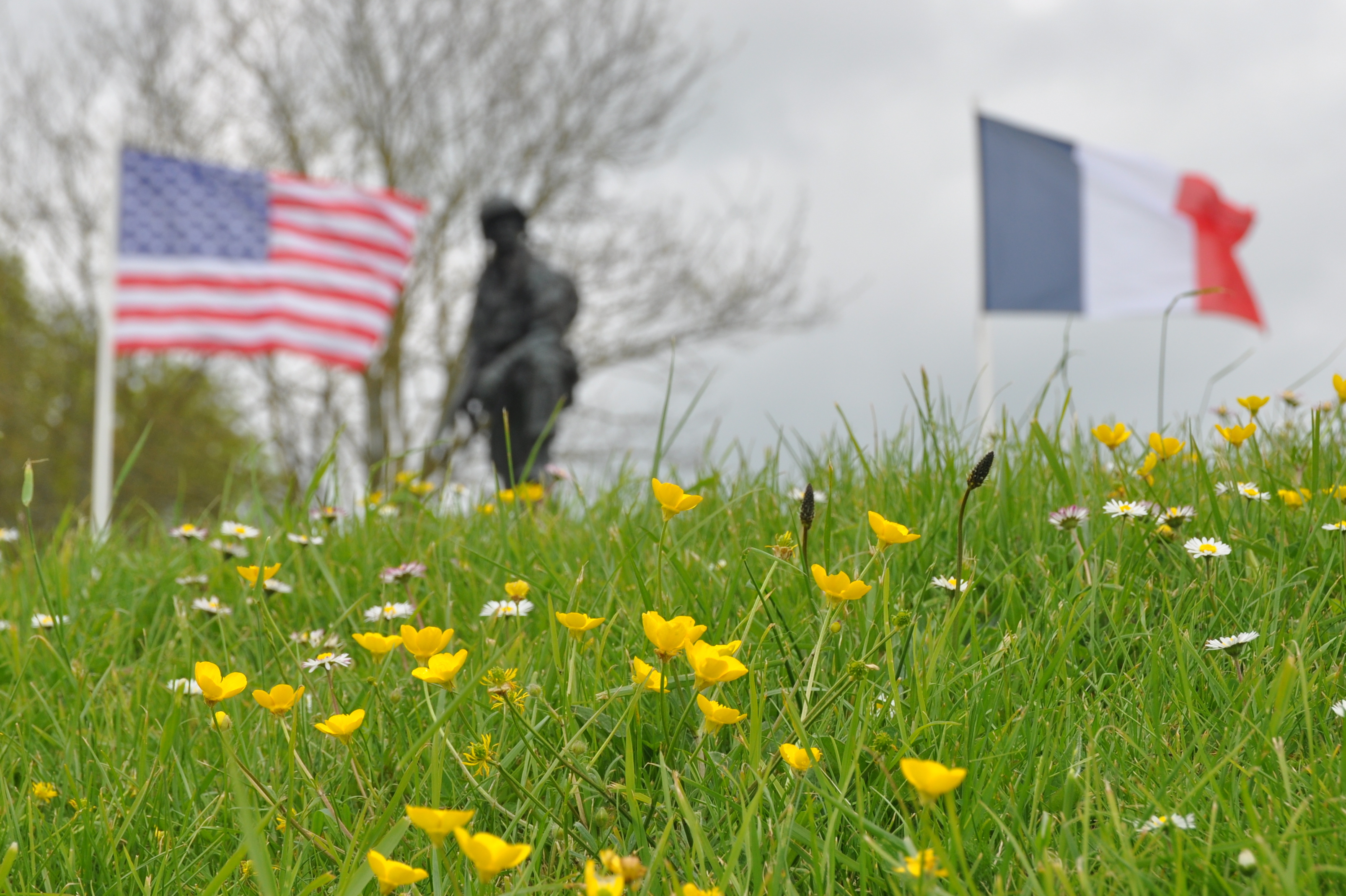
Iron Mike Monument – “In time of peace, sons bury their fathers. In time of war, fathers bury their sons.”
We visited Sainte-Mère-Église, one of the first towns liberated on June 6th. Paratroopers landed in Sainte-Mère-Église in the first hours of D-Day, many of them breathing their last breaths before their feet ever touched the ground. Most notably, Private John Steele, whose parachute got hung up on the church steeple, leaving him to hang there and watch the carnage below. Steele survived D-Day, and the war, and became an honorary resident of Sainte-Mère-Église. The Airborne Museum in town focused only on the paratroopers and their stories. This statue, titled “The Day They Came”, was inside the museum and was made by a French student. I thought it was really interesting how, throughout the region, town, and museum, the French people viewed D-Day and the soldiers of the Allied Forces as their saviors. This statue captured their agony prior to the arrival of Allied troops, specifically the Americans.
Sainte-Marie-du-Mont was also a really interesting town. Almost every street corner had a placard marking the location of a valiant deed, some of them performed by civilians at the risk of death:
Two German officers were studying a strategic military map atop the church steeple. Suddenly a strong burst of wind swept the map to the streets of the town below. The German soldiers ran down after it, only to find a peasant artist. They asked the man if he had seen the map and he replied that he had not. All the while, this man had found the map, quickly rolling it up and stuffing it into his pants. When free of German soldier questioning, the peasant artist quickly handed the map (riddled with strategic military information) over to the Allied Forces.
Others showed the compassion that Americans showed on enemy forces, even when they could have made different choices:
An American paratrooper was crouched below the windows of the harness maker’s house, when a German soldier arrived. The two soldiers saw each other at the same time and fired at the same time. Shot dead, the paratrooper fell to the ground. The seriously wounded German was carried to the butcher’s shop where an American doctor saved his life.
The German Cemetery at La Cambe was actually an American cemetery until 1947. It became a German cemetery in 1948 and contains over 21,000 graves of German soldiers. Having visited several WWII German cemeteries, it is hard to describe how they make me feel. Living in Germany, I have been lucky enough to experience the country and its people on a level most tourists can’t capture in a short visit. I know that Germany in the 2010’s is a very different place than it was in the 1930’s and 1940’s. However, many people unfortunately cannot see past the atrocities of the Third Reich. What’s important to remember is that not all German soldiers “had chosen either the cause or the fight”. They were sons, fathers, brothers, friends. They still deserve to be remembered.
Bayeux War Cemetery is a British cemetery that contains the graves of 4,648 soldiers from many different countries. I think Bayeux is the most beautiful cemetery I have ever visited. It was filled with blooming wisteria, huge trees, and flowers at every headstone. It was filled with life.
In French soil, amongst thousands of Allied troops, there are also 466 German soldiers buried in Bayeux. I don’t know what kind of controversy this caused decades ago, but today, I think it is pretty admirable. Honoring humanity instead of righteousness speaks strongly to the character of the French, the British, and all the families who buried a loved one here.
Every headstone was personalized, allowing the character and spirit of each individual to be celebrated indefinitely. These are the words of families who buried their soldiers in foreign graves:
We miss you when the morning dawns, we miss you when the night returns. – Private F. Chapman
May the sunshine you missed on life’s journey be yours in God’s home of rest. – Private E. Beecham
Oh the joy to see thee waiting on that eternal shore where we’ll meet once more. – Signalman S.W.Peckett
No matter where they were buried, or when, the combined efforts of all fallen soldiers from ‘the longest day’ and WWII changed the world. Their bravery is not forgotten, neither in Normandy, nor at home in America.

